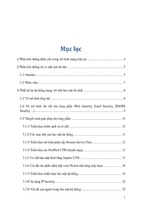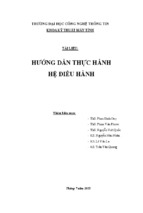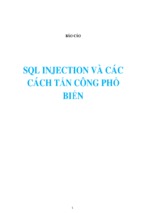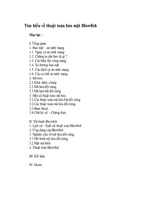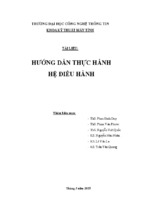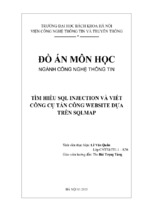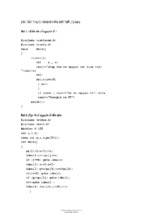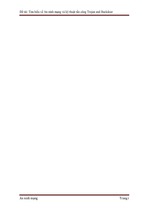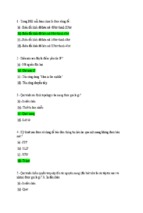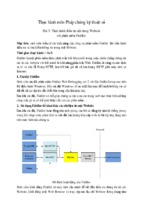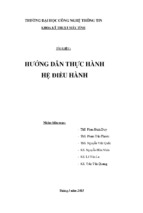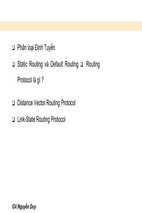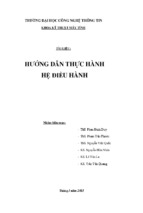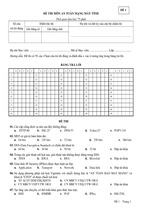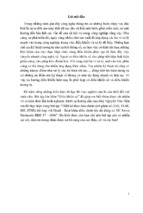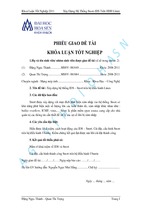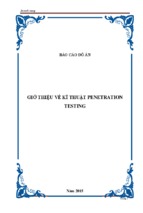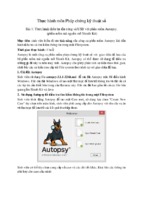Mô tả:
Cellular Networks
Chapter 8
Cellular Networks
Korea-Vietnam Friendship IT College
Cellular Networks
Overview
•
•
•
•
•
•
•
•
•
•
Introduction
Cellular technical basics and Standards
Advanced mobile phone system (AMPS)
Cellular digital packet data (CDPD)
Wireless Cellular Generation
CDMA
WAP
GSM
GPRS
3G
2
Korea-Vietnam Friendship IT College
Cellular Networks
Introduction
• Cellular phones are also called mobile, wireless,
portable, and/or compact handheld communicators,
appliances, and/or devices.
– Voice, video, and data are transported from source to
destination through the air as electromagnetic signals
• 1st generation (1G)
– AMPS
• Analog
• Analog FM modulation
• FDMA
3
Korea-Vietnam Friendship IT College
Cellular Networks
Introduction
• 2nd generation (2G)
• 3th generation (3G)
– DAMPS(IS-54)
• U.S.
• Digital PSK modulation
• FDM/TDMA
– GSM
• Europe, Asia
• Digital PSK modulation
• FDM/TDMA
– IS-95 CDMA
• U.S.
• Digital PSK modulation
• FDM/CDM
•IMT-2000 cellular solutions
•UTMS
4
Korea-Vietnam Friendship IT College
Cellular Networks
Technical Basics
•
•
•
•
•
Cellular Basics
Cellular frequency reuse
Increasing cellular capacity
Handoff
Cellular architecture
5
Korea-Vietnam Friendship IT College
Cellular Networks
Cellular basics
•Base station (BS)
– Access point (AP)
• Mobile station (MS)
– SS (Subscriber station)
– MT (mobile terminal)
– MN (mobile node)
• Downlink
– Forward link
– BS → MS
• Uplink
– Reverse link
– MS → BS
6
Korea-Vietnam Friendship IT College
Cellular Networks
Cellular basics (2)
• Cell
– Coverage area of a BS
• Sector
– Partial area of a cell that
is served by a directional
antenna
7
Korea-Vietnam Friendship IT College
Cellular Networks
Cellular Frequency Reuse
8
Korea-Vietnam Friendship IT College
Cellular Networks
Cellular Frequency Reuse (2)
• D = minimum distance between centers of cells that use the
same band of frequencies (called co-channels)
• R = radius of a cell
• d = distance between centers of adjacent cells (d = R√3)
• N = number of cells in repetitious pattern
– Reuse factor
– Each cell in pattern uses unique band of frequencies
• Hexagonal cell pattern, following values of N possible
– N = I2 + J2 + (I x J), I, J = 0, 1, 2, 3, …
• Possible values of N are 1, 3, 4, 7, 9, 12, 13, 16, 19, 21, …
• D/R=
• D/d =
9
Korea-Vietnam Friendship IT College
Cellular Networks
Increasing Cellular Capacity
• Add new channels
– Not all channels used to start with
• Frequency borrowing
– Taken from adjacent cells by congested cells
– Or assign frequencies dynamically
• Cell splitting
– Non-uniform distribution of topography and traffic
– Smaller cells in high use areas
• More frequent handoff, More base stations
10
Korea-Vietnam Friendship IT College
Cellular Networks
Cell Splitting and Sectorization
11
Korea-Vietnam Friendship IT College
Cellular Networks
Increasing Cellular Capacity (2)
• Cell Sectoring
– Cell divided into wedge shaped sectors
– 3 – 6 sectors per cell, Each with own channel set
– Subsets of cell’s channels, Directional antennas
• Micro cells
– Move antennas to tops of small buildings, Even lamp
posts
– Form micro cells, Reduced power
– Good for city streets, along roads and inside large
buildings
12
Korea-Vietnam Friendship IT College
Cellular Networks
Cells on Wheels (COW)
Cell site mounted on a flatbed tractor-trailer
13
Korea-Vietnam Friendship IT College
Cellular Networks
Handoff
• Handover = Move from one station to next
• Issues:
Which BS is optimal?
Avoid ping-pong oscillations
Avoid data loss
Subscriber or BS initiated?
• Quality Metrics:
Handoff delay
Duration of interruption
Probability of successful handoff
Probability of unnecessary handoff
14
Korea-Vietnam Friendship IT College
Cellular Networks
Improved Handoff Strategies
•
•
•
•
•
Higher priority to handoff than new connections
Hysterisis effect to decide whether new BS is better than old
Soft Handoffs: Connected to both for a short time
Predictive handoffs: Use speed and direction
Adaptive handoffs: Move between pico-, micro-, macro-cellular
depending on the mobility
15
Korea-Vietnam Friendship IT College
Cellular Networks
Cellular Architecture
16
Korea-Vietnam Friendship IT College
Cellular Networks
Cellular Architecture
• Base station controller (BSC) and Base transceiver
station (BTS)
• One BTS per cell.
• One BSC can control multiple BTS.
– Allocates radio channels among BTSs.
– Manages call handoffs between BTSs.
– Controls handset power levels
• Mobile Switching Center (MSC) connects to PSTN and
switches calls between BSCs. Provides mobile
registration, location, authentication. Contains
Equipment Identity Register.
17
Korea-Vietnam Friendship IT College
Cellular Networks
Cellular Architecture
• Home Location Register (HLR) and Visitor Location
Register (VLR) provide call routing and roaming
• VLR+HLR+MSC functions are generally in one
equipment
• Equipment Identity Register (EIR) contains a list of all
valid mobiles.
• Authentication Center (AuC) stores the secret keys of all
SIM cards.
• Each handset has a International Mobile Equipment
Identity (IMEI) number.
18
Korea-Vietnam Friendship IT College
Cellular Networks
Standards
• ATIS (Alliance for Telecommunications Industry
Solutions)
• ANSI (American National Standards Institute): T1
• CTIA (Cellular Telecommunications and Internet
Association)
• ETSI (European Telecommunications Standards
Institute): TETRA specification
19
Korea-Vietnam Friendship IT College
Cellular Networks
Advanced Mobile Phone System (AMPS)
• Introduction AMPS
• Call stages and typical call
20
Korea-Vietnam Friendship IT College
- Xem thêm -

